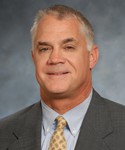
With the 2024 regular legislative session now in the books, environmental advocates and legislators from both parties agree that South Carolina is emerging as one of America’s greenest red states.
They also agree on the reasons: a state whose culture is inseparable from the land and water that shaped it, and an environmental advocacy community that’s consistently bipartisan, pragmatic and solutions-oriented.

“The environmental advocates have the ear of most of the legislators in a bipartisan manner,” said Charleston Republican Sen. Sandy Senn, who this week won the endorsement of the Conservation Voters of South Carolina (CVSC), an environmental group that rates legislators based on their voting records. “They truly try to be inclusive, as they would have to be to get any traction in Columbia.”
Senate Minority Leader Brad Hutto, D-Orangeburg, another CVSC endorsee, echoed Senn’s comments, stressing the groups’ practical approach.
“They understand that legislation is crafted through compromise,” Hutto said. “They understand what their priorities are – where they can make tweaks to strengthen their position and where they can give a little. I find them to be very effective.”
Moreover, he said, they’ve earned the trust of both sides.
“If somebody, anybody, has a question, they meet with them,” Hutto said. “And they don’t tell Democrats one thing and Republicans another, or Upstate people one thing and Lowstate people another. They’re consistent in their messaging.”
Environmental advocates say they’re proud of the trust they’ve fostered and the bipartisan relationships they’ve built. But to any other groups hoping to replicate their success, they offer this note on the process – it’s taken almost 35 years.
Rapid growth … and a very big win

Dana Beach, a pioneer of the state’s modern environmental movement, founded the Coastal Conservation League in 1989. In those days, Beach said, there were “maybe half a dozen” environmental groups working in the state, with no more than 20 total staffers and combined budgets of less than $1 million.
“What happened over the subsequent 34 years is that the number of organizations expanded to in the neighborhood of 20,” Beach said in an interview this week. “The total staff are probably around 160 working full time on conservation, with a total combined budget in excess of $2o million.”
And as Beach is quick to point out, those are just operating budgets. He estimates that the current public and private investment in land conservation is “now in the hundreds of millions, approaching billions.”
“The sheer capacity was just very limited 34 years ago,” Beach said. “And that’s the big change in the movement – a massive increase in capacity, staff and budget, and organizational depth and ability.”

Also present in those early years was S.C. Sen. Chip Campsen, R-Charleston, who was first elected to the state legislature in 1997. Like most observers, he says the movement’s success has been built on a foundation of bipartisan compromise and pragmatic solutions.
“It is a big-tent conservation movement, and you don’t see that in other states,” Campsen told Statehouse Report. “And a big reason is because most of our conservation initiatives are conservation by negotiation and compensation and not by regulation.”
Key to that strategy since 2004 has been the South Carolina Conservation Bank, which to this day is described by many in the environmental movement as their most historic achievement, with 375,000 acres of land protected at a cost of $865 an acre..
“We have been able to protect property at an ecosystem scale because of this – because (leveraging every dollar makes) it’s so efficient and because it respects property rights,” said Campsen, primary author and sponsor of the bill that created the bank.
Taken together, the Conservation Bank and private programs with similar models have protected 3 million acres – or about 15% of all the land in South Carolina. Gov. Henry McMaster has set a goal of doubling that number to 6 million by 2050.
Today and tomorrow
By any standard, this year’s regular legislative session was a success for conservationists, who worked to secure new investments in land protection and clean water, as well as the state’s first legislation to protect its increasingly endangered blue crab population.
But their real accomplishment was in stopping – or as they describe it, “pausing” – a massive energy bill that called for a new, generational commitment to natural gas at the very moment the nation is moving away from long-term reliance on fossil fuels. And once again, their efforts were pragmatic and constructive, recognizing from the start that South Carolina is the nation’s fastest growing state with expanding energy needs.
“The environmental community has never been a ‘just say no’ movement in South Carolina,” said Eddy Moore, a greenhouse gas emissions expert with the Southern Alliance for Clean Energy. “We’ve tried to put processes in place that develop new sources of energy at a benefit to ratepayers.”

John Tynan, president of the CVSC, points to the passage of 2019’s Energy Freedom Act as an example of Moore’s point.
“This was a transformative piece of clean-energy legislation that was unanimously supported in the House and the Senate,” Tynan said. “To get unanimous votes in both chambers and get it signed by the governor really speaks to our ability to build consensus, and also work on some bold and critical issues.”
In terms of the future, Tynan says the movement is focused on three big issues: meeting the goal of protecting an additional 3 million acres, reducing greenhouse gas emissions by generating abundant renewable energy, and ensuring that citizens’ environmental concerns continue to be heard by legislators, regulators and the courts.
And in pursuit of those goals, Tynan said his organization plans to keep doing what’s worked so well for the past three-plus decades – real bipartisanship, and not just in terms of policy-making.
“What’s really unique across the country is that we do support Republicans when they run for office – we do give them our accolades, along with Democrats,” he said. “When folks have our back, we want them to know we’ll have their back on the election trail.”
- Have a comment? Send to: feedback@statehousereport.com.


